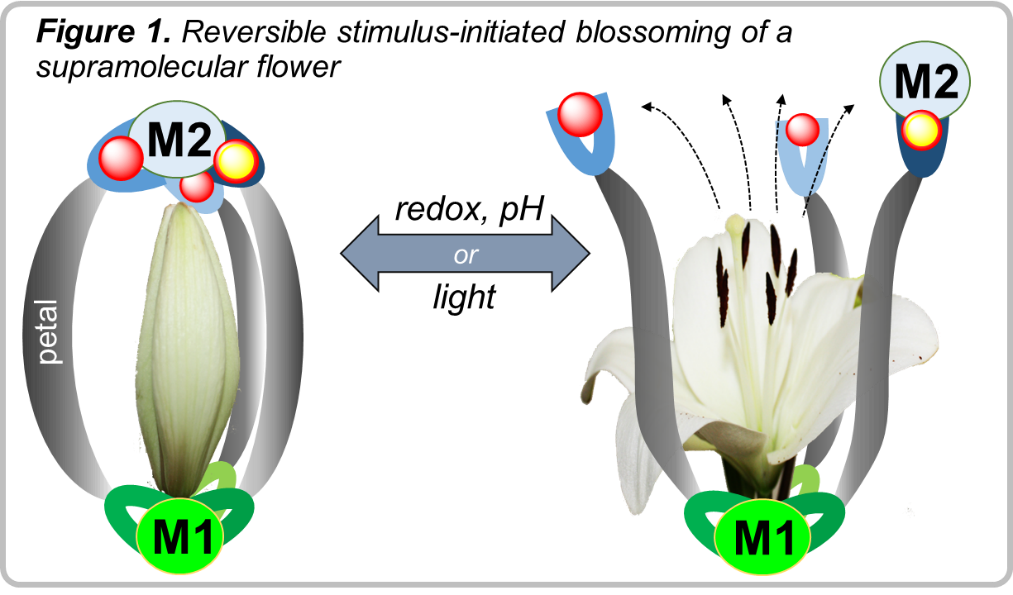Stimuli-responsive Supramolecular Flowers
Project team: PIs Christian Hartinger and James Crowley, AI James Wright
Nature exploits stimuli-responsive materials and supramolecular forces to control the assembly of molecules into living organisms, including shaping DNA strands into the double helix structure and building the membrane of every cell. Borrowing this concept from biology, we have designed specific supramolecular containers that can open and close reversibly in a controlled manner – just like the petals of a flower in sunlight. These supramolecular flowering structures will be assembled from two different metal centres that are connected by bridging petal ligands. The petals will be opened and closed reversibly by external stimuli, such as redox processes, pH change or light. The structural changes of the supramolecular flowers will be exploited to turn on (and off) catalytic processes or bind and release selected molecules including drugs targeted to tumour tissue. The development of these new switchable bio-inspired supramolecular architectures will open the way for new applications in catalysis, drug development and materials science.
Interested in this project?
We are currently seeking expressions of interest for a PhD Scholarship from highly motivated PhD candidates with a high level Bsc(Honours) or Masters qualification in ideally Synthetic Chemistry. The Marsden-funded project includes the cost of fees and provides a full stipend for three years to work at the University of Auckland (supervised by Profs. James Wright and Christian Hartinger) and in collaboration with the University of Otago (A/Prof. James Crowley).
This project encompasses the development of stimuli-responsive supramolecular materials that can open and close reversibly in a controlled manner. The structural changes of the supramolecular flowers will be exploited to turn on (and off) catalytic processes or bind and release selected molecules including drugs targeted to tumour tissue. The development of these new switchable bio-inspired supramolecular architectures will open the way for new applications in catalysis, drug development and materials science.
Project description: Preparation of different cage compounds built from 3 petals, particularly with an emphasis on Co and Fe as the metal centres. The student will explore the dynamics of the opening and closing of the cage compounds using fluorophore encapsulation and spectroscopic methods, and the role in catalysis of such a process.


